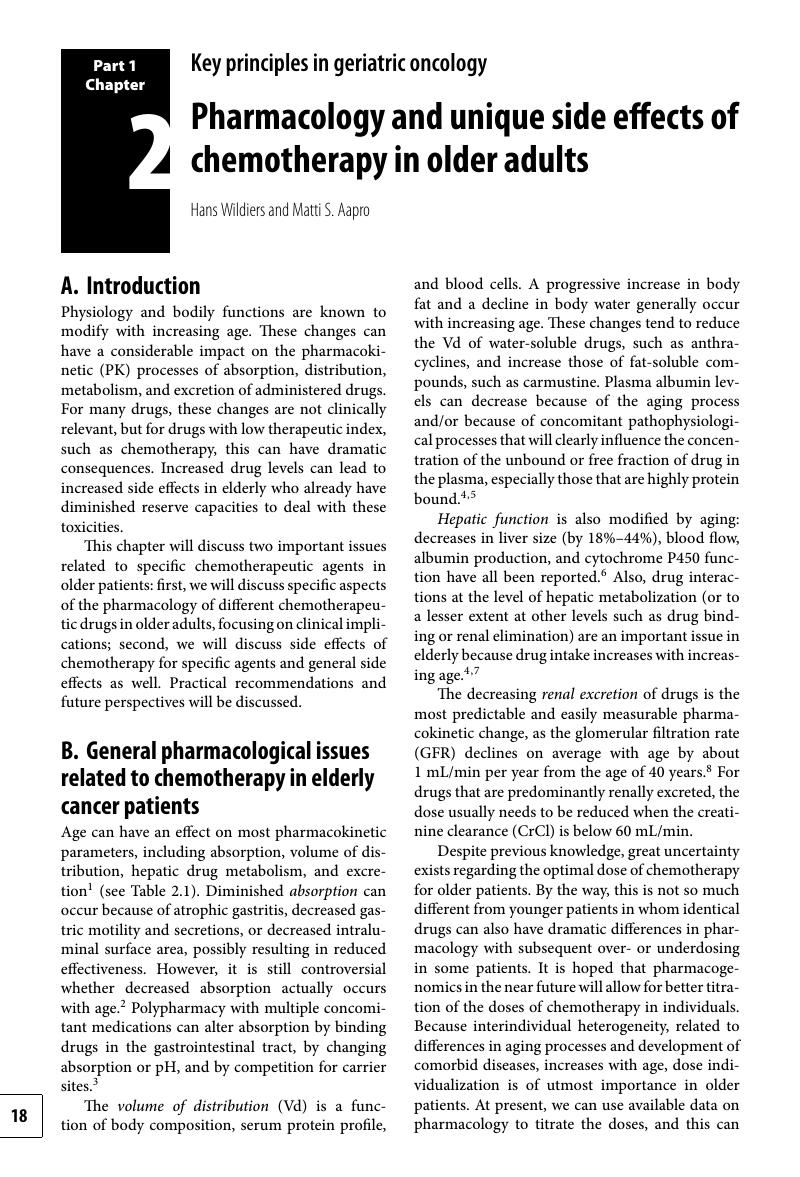Book contents
- Frontmatter
- Contents
- Contributors
- Part 1 Key principles in geriatric oncology
- Chapter 1 Geriatric assessment for the older adult with cancer
- Chapter 2 Pharmacology and unique side effects of chemotherapy in older adults
- Chapter 3 Pharmacology and unique side effects of hormonal therapy in older adults
- Chapter 4 Drug utilization, adherence, and unique side effects of targeted therapy in older adults
- Chapter 5 Principles of surgical oncology in older adults
- Chapter 6 Principles of radiation oncology in older adults
- Part 2 Management of solid tumors in older adults
- Part 3 Management of hematologic malignancies in older adults
- Part 4 Symptom management and supportive care of older adults
- Index
- References
Chapter 2 - Pharmacology and unique side effects of chemotherapy in older adults
from Part 1 - Key principles in geriatric oncology
Published online by Cambridge University Press: 05 August 2011
- Frontmatter
- Contents
- Contributors
- Part 1 Key principles in geriatric oncology
- Chapter 1 Geriatric assessment for the older adult with cancer
- Chapter 2 Pharmacology and unique side effects of chemotherapy in older adults
- Chapter 3 Pharmacology and unique side effects of hormonal therapy in older adults
- Chapter 4 Drug utilization, adherence, and unique side effects of targeted therapy in older adults
- Chapter 5 Principles of surgical oncology in older adults
- Chapter 6 Principles of radiation oncology in older adults
- Part 2 Management of solid tumors in older adults
- Part 3 Management of hematologic malignancies in older adults
- Part 4 Symptom management and supportive care of older adults
- Index
- References
Summary

- Type
- Chapter
- Information
- Practical Geriatric Oncology , pp. 18 - 31Publisher: Cambridge University PressPrint publication year: 2010
References
- 1
- Cited by



